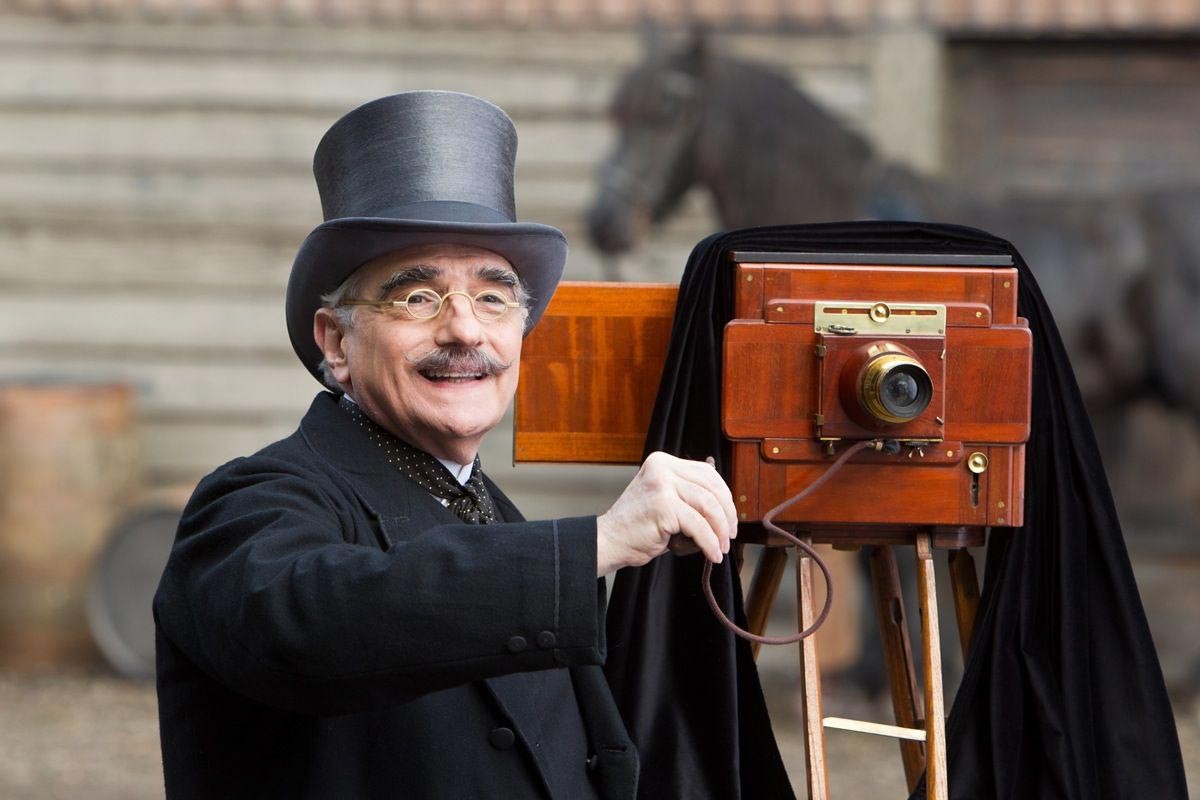Martin Scorsese's HUGO (on 1st viewing)
I note above in the title that this is a reaction to my first viewing of Martin Scorsese's latest masterpiece Hugo. This is because, frankly, I want and need to see the film again. Unlike Pauline Kael, for example, I can't really base all my film experiences on the initial (knee-jerk) reaction. While images and scenes keep permeating my brain, however, and I keep admiring it as a Scorsese fan, here are some of my thoughts and impressions on the film, which may perhaps not be as articulate as I'd like, but a review nonetheless:
Martin Scorsese's adaptation of Brian Selznick's inspired novel The Invention of Hugo Cabret (which itself was like a pop-up-graphic-regular-novel hybrid, which is the first clue as to why 3D was appropriate) is in just one word: wonderful. It has a lot of drama to it, and not just because it deals with deceased fathers, or supposed deceased father figures, and yet the film also carries the wonder of invention, for things seemingly fantastical (an 'automaton' that is kind of like a robot only with a specific task to be carried out), and overtly fantastical as cinema and the process of invention itself. It ostensibly follows its young hero, Hugo Cabret (a very talented young actor Asa Butterfield), as he hides in the clock-tower of a train station in Paris circa 1933, and how he slowly bonds with a crotchety old shopkeeper (Ben Kingsley) via his much younger relative (Chloe Moretz), and a discovery is made about who this 'Papa Georges' really is.
Nothing less than beautiful as a "kids" movie (in quotes since it can be for anyone that just happens to have two kids as its main characters) and as an ode to film- how precious is it, how important artists are, and what the medium is possible for. In fact, this is what makes the 3D not only impressive - it is essential to the craft of the film; where usually 3D is a gimmick used for cheap effect, or when filmmakers don't understand proper visual spacial relations or what depth of field is, Scorsese and the superlative DP Robert Richardson does. Remarkably as well in scenes that showcase what 'Papa Georges' did with his film sets as the director Georges Melies created fantasy realms.
Scorsese is one of the only filmmakers - maybe, arguably, the ONLY filmmaker - to understand how to use 3D to his advantage with the space he has. As the man who coined the phrase "Cinema is about what's in the frame and what's out", he takes this gimmick - and it still is a gimmick - and gives it a kick in the ass. And yet it's not just the technique that's impressive here, it serves as the tool for the story, which is about something precious and dear: the old and the new, and being able to make room for both equally.
There are other factors that come into play as well, for why Georges Melies wasn't celebrated throughout time and space (and of course sound in cinema and WW1 did a lot for that), but it's really about how to find wonderment in art and life, how the two are more than compatible, they compliment each other. Art feeds life. And ultimately a filmmaker in his 60's like Scorsese connects strongly with the young hero, a figure who finds some comfort in the world of fantasy of the automaton and cinema, and in Papa Georges (not to mention the Michael Stuhlbarg character, who is a film preservationist in the days when film nitrate was the used to make women's shoes).
I also neglect to mention some other things in the film, such as Sacha Baron Cohen playing a quasi-bumbling police officer at the train station who with his big dog has a penchant for carting off stray kids to the orphanage. His parts are the stuff of the "B-plotline", but it's still entertaining stuff, and gives a little time to spare between the tragedy that is Hugo's early life (the death of his father played by Jude Law) and the tragedy of Papa Georges' life (when Stuhlbarg shows the surviving film reels to Hugo and others, it's a bittersweet, touching moment, so rare in films these days in general).
Overall, it turns into a magical *cinematic* experience, and a deeply emotional one - for kids, since the story is primarily told through them, and for adults as it addresses universal concerns (as a filmmaker of the 'Movie Brats' by the way, Scorsese still makes the film for himself - and in this case, maybe his young 12 year old daughter, who knows). Thankfully amid the clock-towers and sweeping crane shots and the (swoon) dream-within-dream sequences, there's heart and human beings, and one of Ben Kingsley's most affecting performances in years. There's spectacle in the vision, grace in the action set-pieces (few but significant as they are), and the colors rich and textured in grades of blue, green, red, gold and white. Go see this one.
Also:
 |
| And that's... just fucking cool! |







Comments
Post a Comment